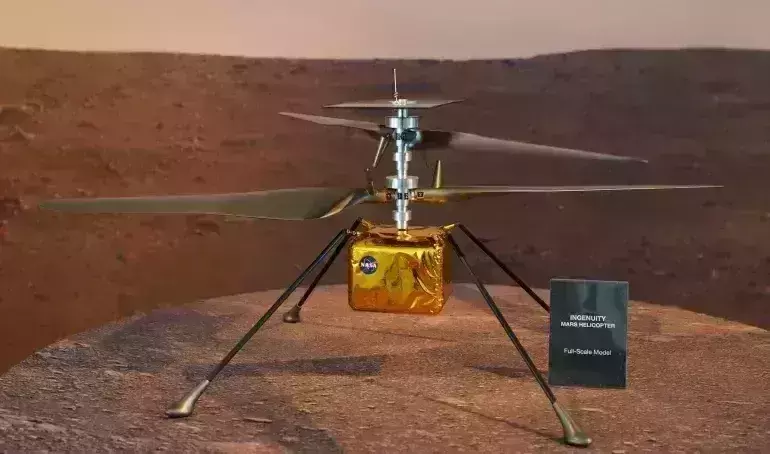
Mars Ingenuity helicopter completes its most challenging flight yet
text_fieldsFile: Damian Dovarganes/AP Photo
Washington: The Ingenuity Mars Helicopter of NASA successfully completed its ninth and "most challenging yet" flight on Mars, IANS reported. According to NASA, the helicopter has flown for 166.4 seconds at a speed of 5 m/s.
Before the flight, NASA had said that they are taking things to a new level with a high-speed flight across unfriendly terrain, which will take them far away from the Perseverance rover.
The Perseverance rover landed at Mars' Jezero Crater, where a big lake and a river delta were located in the ancient past, in February. In early April, the helicopter, Ingenuity, was deployed from the rover, which went for a month-long five-flight campaign designed to check the chances of aerial exploration on the Red Planet.
As Ingenuity succeeded in its original mission of technology-demonstrating, it was rewarded an extension to showcase the scouting potential of Mars rotorcraft.
During the 9th flight, Ingenuity flew over a rugged region named "Seitah", characterised by sandy ripples and thus challenging for rovers. The chopper took colour images of the area, though it challenged the choppers navigation algorithm. The region contained rocks, ripples, shadows, textures, ups and downs.
Harvard F Grip and Ken Williford wrote in a blog post that they told Ingenuity that the rugged features of the Seitah region are all located on flat ground. It freed the navigation algorithm from trying to work out variations in terrain height and concentrate on interpreting the movement of the features by the helicopter's movement alone. Grip is the Ingenuity Chief Pilot, and Willford is Perseverance Deputy Project Scientist.
In the following week, Ingenuity will send colour images it took that scientists look forward to studying. Grip said that the images captured by the chopper include rock outcrops that show contact between the major geologic units on Jezero Crater. The Perseverance scientists hope to visit in part a system of fractures, they call "Raised Ridges", to investigate ancient subsurface habitats.
Last week, Perseverance rover had set out for a journey across Jezero Crater's floor searching for signs of ancient life. The self-driving six-wheeled rover is travelling at its top speed, 120 meters per hour.
























